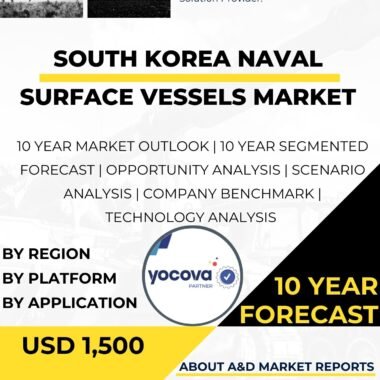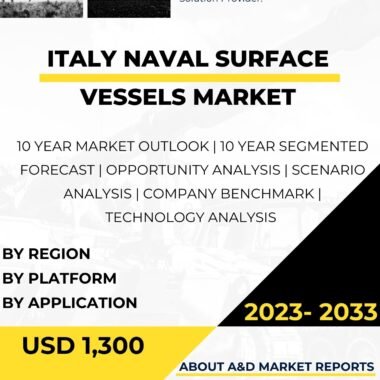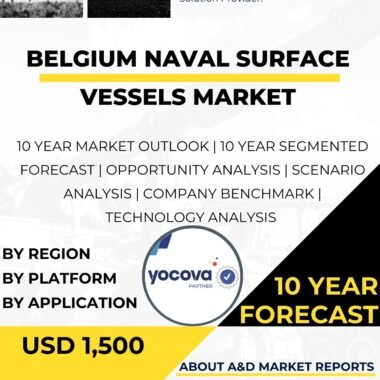Description
Singapore Naval Surface vessels Market forms a cornerstone of the nation’s defense strategy, reflecting its commitment to maintaining a modern, capable, and technologically advanced navy. As a small island nation with strategic maritime interests and a thriving economy, Singapore recognizes the vital importance of naval power in ensuring maritime security, protecting trade routes, and safeguarding its sovereignty.
Role and Significance of Naval Surface Vessels
Naval surface vessels serve as the backbone of the Republic of Singapore Navy (RSN), carrying out diverse missions including maritime patrols, coastal defense, search and rescue operations, anti-piracy missions, and regional security cooperation. These vessels form a flexible and multi-mission fleet designed to address both conventional and asymmetric threats in an increasingly complex maritime environment.
By investing in cutting-edge naval surface vessels, Singapore ensures that its navy remains agile, efficient, and ready to operate across the full spectrum of maritime operations.
Key Market Drivers
Singapore’s geographic location at the crossroads of major global shipping lanes makes maritime security a strategic imperative. The nation’s economic prosperity depends heavily on the safety of sea lanes, port operations, and maritime trade. Consequently, maintaining a capable naval surface fleet enables Singapore to protect vital maritime interests, deter threats, and ensure uninterrupted trade flow through regional waters.
Singapore’s ongoing defense modernization programs are central to the expansion of the naval surface vessels market. The RSN continuously upgrades its surface fleet with new-generation vessels featuring improved stealth characteristics, integrated sensor systems, and advanced command-and-control capabilities. These initiatives ensure that the navy remains operationally ready and technologically superior.
Research, Development, and Innovation
Singapore places strong emphasis on research and development (R&D) to create indigenous solutions tailored to its maritime environment. The nation’s defense industry, supported by local shipyards and research institutions, actively develops customized naval platforms optimized for tropical climates and littoral operations.
This commitment to technological innovation allows Singapore to design and maintain vessels that meet its unique operational needs while fostering domestic expertise in shipbuilding, systems integration, and maritime engineering.
International Collaborations
Collaboration with international defense companies and research partners plays a crucial role in Singapore’s naval surface vessel strategy. These partnerships facilitate access to advanced design technologies, shipbuilding methodologies, and next-generation naval systems.
Through cooperation with global defense leaders, Singapore accelerates its vessel development programs, enhances interoperability with allied navies, and ensures that its defense industry remains aligned with global best practices.
Technological Advancements and Capabilities
The adoption of advanced naval surface vessels reflects Singapore’s broader commitment to maritime security and regional stability. Modern vessels in the RSN’s fleet incorporate sophisticated radar and sonar systems, automated weapon platforms, and modular mission configurations that enable multi-role flexibility.
Such capabilities allow the navy to adapt rapidly to diverse operational requirements—ranging from humanitarian assistance to joint military exercises—while maintaining high operational efficiency and readiness.
Economic and Industrial Impact
The naval surface vessels market also contributes significantly to Singapore’s economy and industrial base. The sector provides employment opportunities for skilled engineers, technicians, and maritime professionals while promoting innovation in materials science, robotics, and digital ship systems.
This ecosystem supports workforce development, enhances industrial competitiveness, and strengthens Singapore’s position as a leading hub for defense technology and maritime engineering in the Asia-Pacific region.
Challenges and Strategic Outlook
Despite its successes, the market faces challenges such as high production costs, evolving maritime threats, and the constant need to integrate emerging technologies like autonomous systems and AI-driven sensors.
To address these challenges, Singapore continues to adopt a forward-looking approach—investing in automation, digital twin technologies, and sustainable shipbuilding practices to reduce operational costs and enhance vessel longevity.
Looking ahead, the RSN’s modernization initiatives will likely emphasize multi-mission surface combatants, unmanned surface vehicles (USVs), and enhanced networked warfare capabilities. These advancements will further strengthen Singapore’s maritime defense posture and ensure long-term strategic resilience.
Conclusion
The Naval Surface Vessels market in Singapore stands as a vital pillar of the country’s defense and maritime strategy. Through continuous modernization, strong R&D investment, and close collaboration with international partners, Singapore has developed a world-class naval force capable of safeguarding its maritime interests and contributing to regional stability.
As Singapore continues to enhance its naval surface fleet with advanced technologies and modular designs, it reaffirms its position as a maritime power and defense innovation leader in Southeast Asia. The ongoing growth of this market underscores the nation’s unwavering commitment to security, technological progress, and operational excellence.




